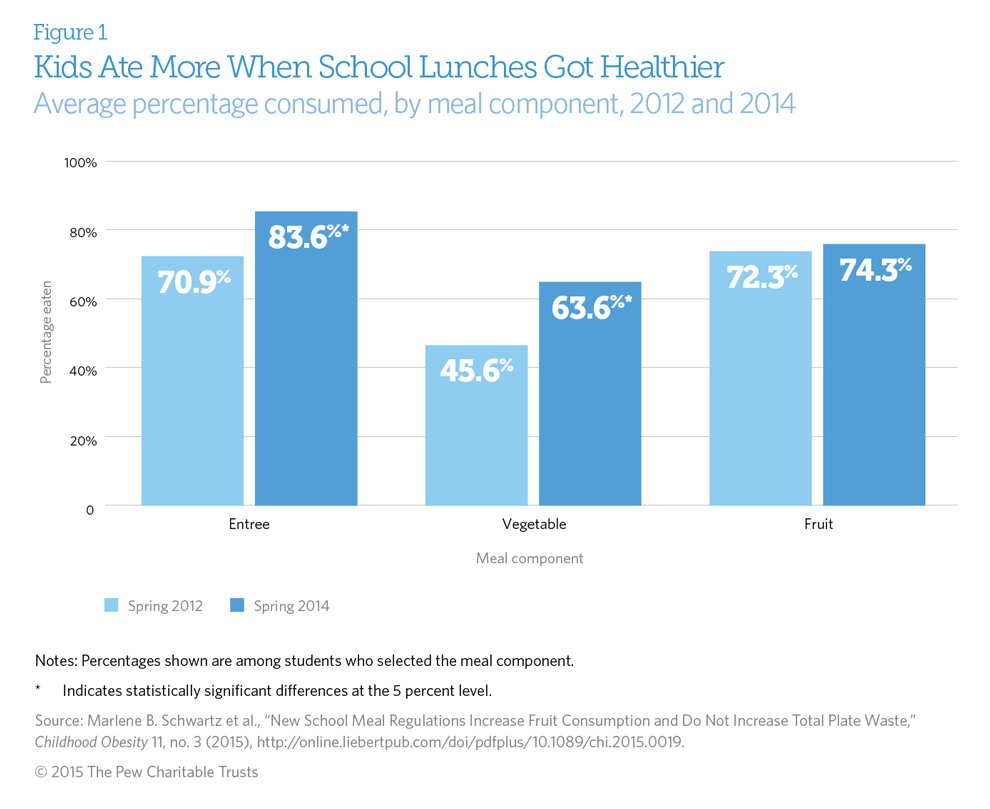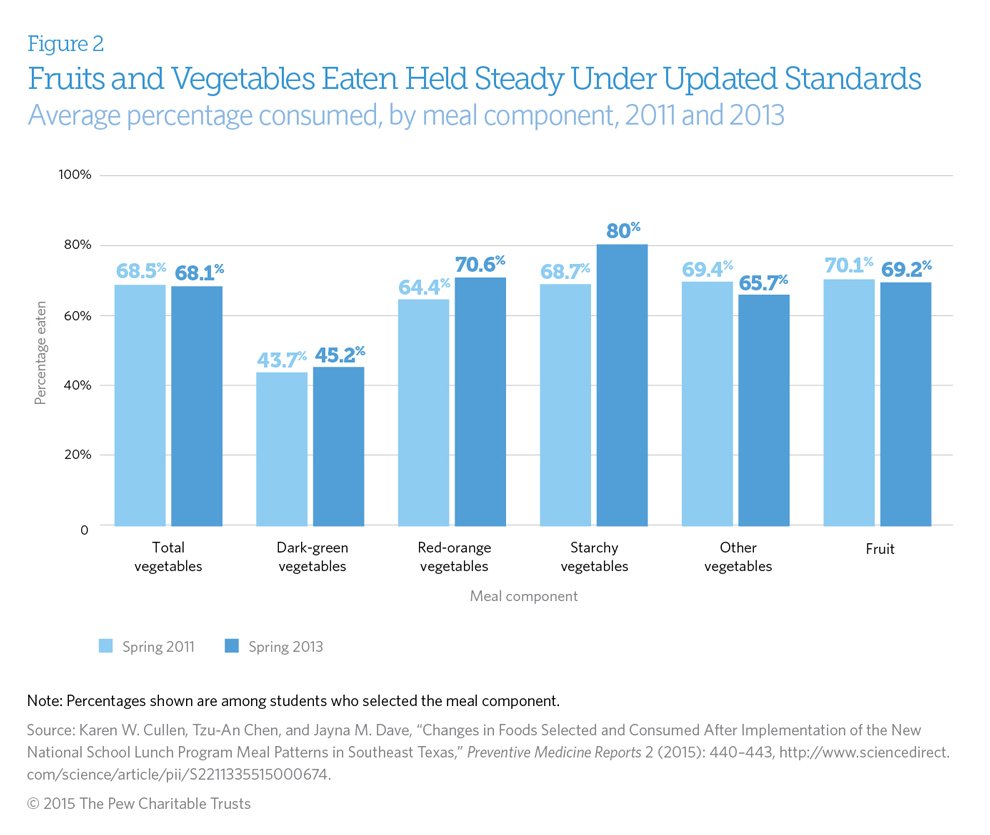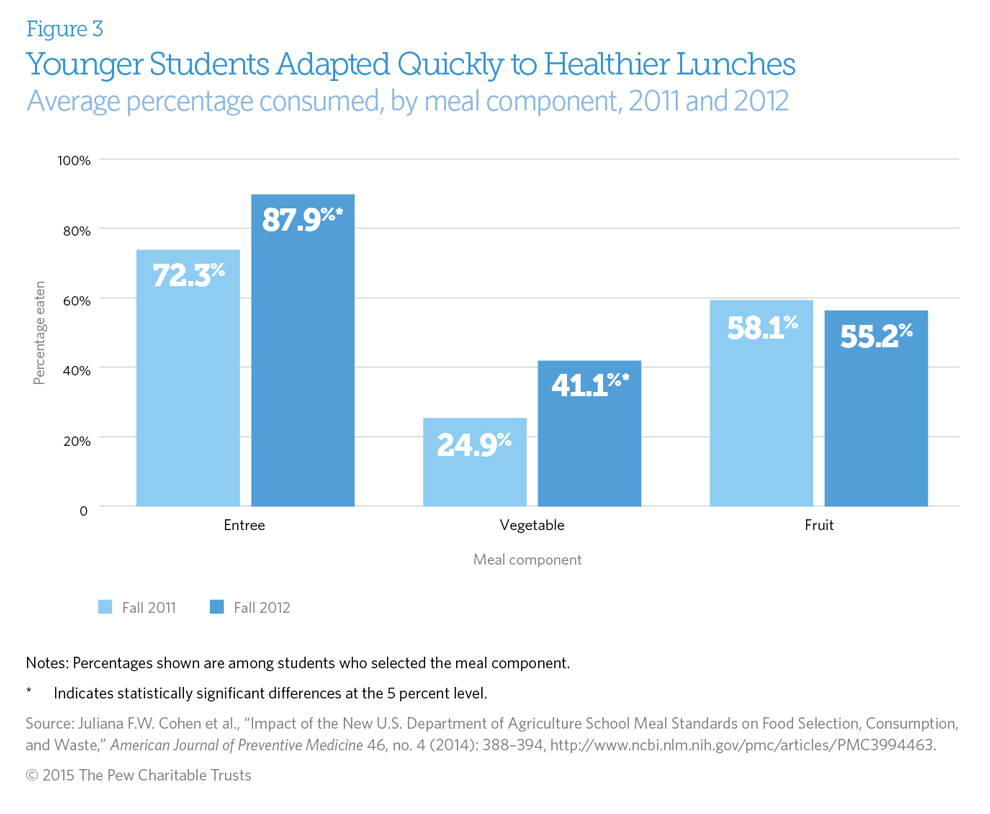Healthy School Lunches Improve Kids’ Habits
Strong nutrition standards work, evidence shows
Schools can serve healthy lunches, but will kids eat them?
This question has been asked often since the 2012-13 school year, when districts across the U.S. raised the nutritional quality of meals to meet updated national standards.
The clear answer—demonstrated in multiple studies comparing students’ eating habits before and after these changes—is yes.
Let’s look at the evidence from the three studies that tracked the largest numbers of children. Each measured the amount of food students selected and calculated the percentage eaten and discarded.
Middle schoolers ate more, wasted less
Researchers from the Rudd Center for Food Policy and Obesity weighed and photographed lunches served to children at 12 Connecticut schools in spring 2012, 2013, and 2014. Compared with 2012, children ate nearly 13 percentage points more of their entrees and 18 percentage points more of their vegetables by the last year of the study. (See Figure 1.) Food waste declined as a result.
The researchers also found that greater variety led to healthier choices. Each additional fruit option offered was associated with a 9.3 percent increase in the number of students taking a fruit serving.

Greater variety led to healthier choices. Each additional fruit option offered was associated with a 9.3 percent increase in the number of students taking a fruit serving.
Texas students ate more fruit, made more varied vegetable choices
Researchers with the Baylor College of Medicine and Texas Children’s Hospital observed and recorded meals at eight elementary schools in southeast Texas before and after the 2012 updates.
In 2013, more students took fruit and vegetables with their lunches—76 percent, compared with 58 percent in 2011—and they ate more fruit (including 100 percent juice) and red-orange vegetables. Kids who chose red-orange vegetables with their meals nearly doubled their consumption of these foods in 2013, eating almost a quarter cup, compared with about an eighth of a cup in 2011.
Overall, the percentage of fruits and vegetables that students discarded did not change. (See Figure 2.)

Kids who chose red-orange vegetables with their meals nearly doubled their consumption of these foods in 2013, eating almost a quarter cup, compared with about an eighth of a cup in 2011.
Kids ate more of their entrees and vegetables
The Harvard School of Public Health investigated the transition to healthier school lunches among students in grades 1 through 8 in four schools. Researchers recorded and weighed students’ meal selections and the food discarded from each tray in the fall of 2011 and again one year later.
In 2012, more children took a serving of fruit, and they ate larger shares of entree and vegetable servings compared with the previous year. (See Figure 3.)

Teaching children the importance of a balanced diet requires consistent, long-term efforts, but considerable evidence shows that schools have—and are seizing—the opportunity to help young Americans develop healthy eating habits. Although areas such as menu variety and food waste still have room to improve, these studies demonstrate that kids are accepting and benefiting from school lunches that meet today’s strong national standards.






